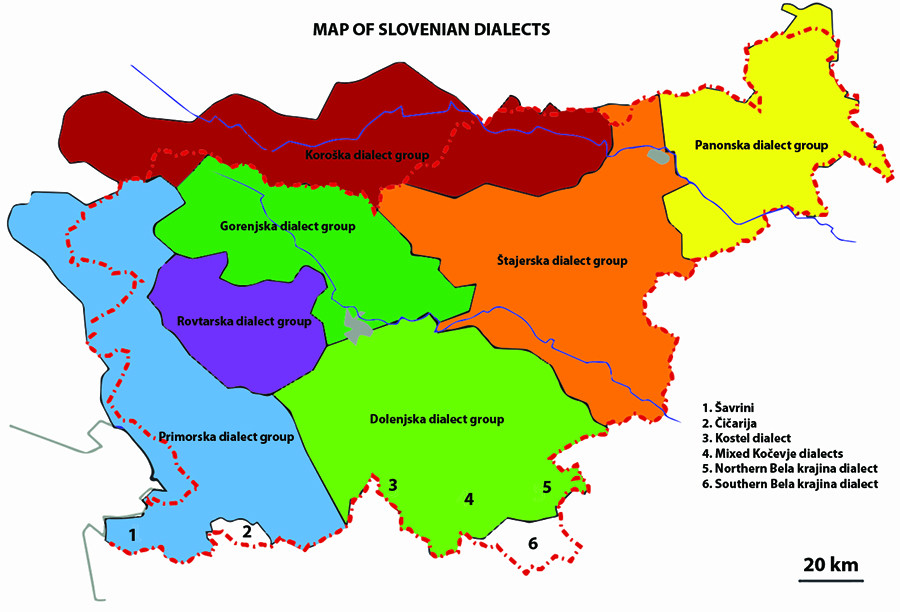Dialects enrich the Slovenian language
The Slovenian language is the most divided in terms of dialects among the Slavic languages, having around 50 dialects that are classified into seven dialect groups: the Gorenjska, Dolenjska, Štajerska, Panonska, Koroška, Primorska and Rovtarska dialect groups.
Development of dialects
The Freising Manuscripts dating from 972 to 1039, which are considered to be the oldest known preserved records in Slovenian, do not yet display any dialectal features. However, the Rateče/Celovec Manuscript from the 14th century and the Stična Manuscript from the 15th century contain words that prove that the language was already fragmented into dialects at that time. The dialectal diversity of Slovenian is due to geographical, political, historical and social factors.
The emergence of dialects was influenced by the settlement of the territory of present-day Slovenia, geographical barriers and transport routes, which often ran through the middle of the dialect group and led to larger cities. In the past, people did not often cross high mountains and hills, nor did they migrate to cities on a daily basis and have regular contact with the inhabitants of other areas, but remained in their parishes and formed language communities different from their neighbouring ones. Thus, the Slovenian language began to differentiate and it acquired new dialects. Triglav and the Karavanke Mountains with the hilly surroundings in the west of Slovenia separate the Koroška, Gorenjska, Rovtarska and Primorska dialects. The Ljubljansko barje separates the Gorenjska dialect from the Dolenjska dialect, and the Sava river represents a landmark between the Štajerska and Dolenjska dialects.
The languages of the neighbouring countries of Hungary, Italy, Austria and Croatia had a great influence on Slovenian dialects.
The dialects bordering on the neighbouring languages have assumed many of their words. In the Primorska dialects, Italianisms are used, in the Štajerska and Panonska regions Germanisms, in the Panonska dialects in the Prekmurje region or along the border with Hungary, many words from Hungarian are present, and the Dolenjska dialects have more Croatian words than other dialects.
Our heritage
A dialect vocabulary is more sonorous, fluent, melodic and more vivid than the Slovenian standard language. It is important for us, as Slovenians, to be aware of the specific features of individual dialects, to respect and preserve them.
Slovenian dialects are so different from each other that also two Slovenians who come from other ends of our country have considerable trouble understanding each other. However, our dialects are also very interesting and connect us even more.
Similar articles
-
A short history of Slovenia
-
The Slovenian anthem emphasises ties and friendship among nations
-
1991 Prešeren Award Winners
-
Drago Jančar – a European storyteller in the Slovenian language
-
Dialects enrich the Slovenian language
-
Pioneers of Slovenian Beekeeping
-
Slovenian monasteries
-
Extremely rich cultural heritage
-
Stories from beehive panels
-
World’s oldest vine



